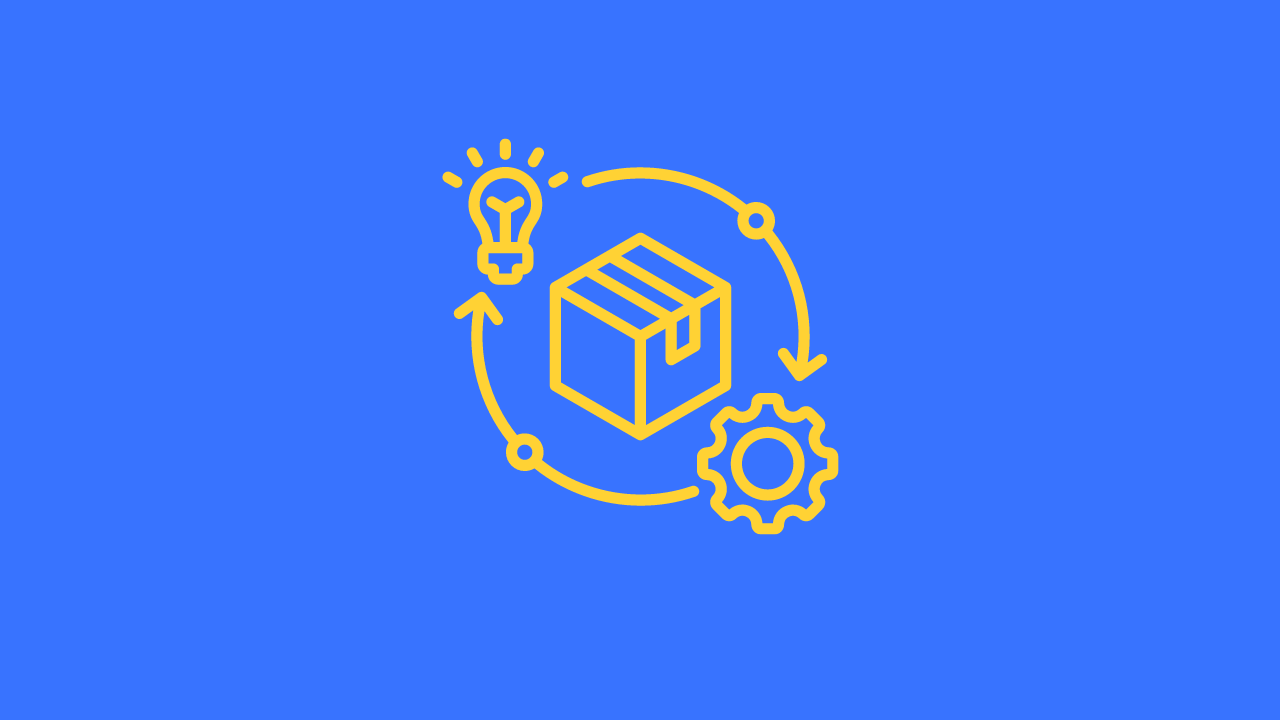
In a time when consumer preferences evolve at lightning speed, understanding the community’s pulse is crucial to drive innovation in product development.
Imagine crafting a product that meets market demands and resonates deeply with its users—sounds like a dream, right?
This is where community feedback steps in as a game-changer.
Gone are the days when products were developed behind closed doors; today, collaboration and communication with your audience can shape everything from initial concepts to final launches.
But before working on your product, you should incorporate your business as a suitable legal entity with doola’s formation services to ensure liability protection for yourself and your product in the near future.
Join us as we explore how harnessing community insights can drive a brand’s success and create offerings that truly reflect people’s wants and needs.
Buckle up for a journey into the world where creators and consumers unite!
Role of Community Feedback in Product Development

In today’s fast-paced market, businesses must innovate and develop new products to stay competitive. Product development is the process of creating new products or improving existing ones.
It involves a series of steps, including ideation, design, testing, and launch.
One key aspect of successful product development is gathering feedback from the community.
This refers to obtaining insights and opinions from potential customers, current users, industry experts, and other stakeholders throughout the development process.
Community feedback plays a vital role in shaping the final product, providing valuable information on what features are desirable or necessary for consumers.
Here are some reasons why:
1. Understand Customer Needs and Preferences
By seeking feedback from the community, businesses can better understand their target audience’s needs and preferences.
This insight allows them to create products that meet their customers’ requirements, leading to higher satisfaction.
2. Identify Potential Issues Early
Gathering feedback early in the development process can help identify potential problems or challenges once the product is launched.
This allows businesses to address these concerns before they become bigger problems.
3. Increase Market Acceptance
Products developed with community involvement are more likely to be well-received by consumers as they have been designed based on their input.
This increases the chances of market acceptance and business success.
4. Build Brand Loyalty
Involving the community in product development shows that a business values its customers’ opinions and wants to create products that cater to their needs.
This helps build trust and loyalty among customers towards the brand.
5. Gain a Competitive Edge
With constant technological advancements and changing consumer demands, staying ahead of competitors is essential for any business.
By incorporating community feedback into product development, companies can gain a competitive edge by creating products better suited to their target market.
Benefits of Incorporating Community Feedback in Product Development
Community feedback in product development has numerous benefits that can positively impact a business.
It helps identify unmet needs, creates customer-centric products, saves time and resources, improves product quality, increases brand loyalty, and enhances innovation.
As such, it is essential for businesses to actively seek out and listen to feedback from their community to continuously improve their offerings and stay ahead in a competitive market.
Here are the key benefits of incorporating community feedback in product development.
1. Identifying Unmet Needs
One of the main advantages of community feedback is that it helps businesses identify unmet needs and gaps in their products or services.
By listening to your customers’ words, you can better understand their pain points and address them accordingly.
2. Creating Customer-Centric Products
When you involve your community in product development, you create products that meet their needs and desires.
This results in more customer-centric products tailored to their preferences, increasing customer loyalty and retention.
3. Saving Time and Resources
Incorporating community feedback can help save time and resources by avoiding costly mistakes that could arise from launching a product without proper research or testing.
It also allows businesses to make informed decisions based on real-time data, resulting in more efficient resource use.
4. Improving Product Quality
Feedback from your community can highlight areas for improvement, enhancing the overall quality of your product or service.
By considering suggestions and criticisms from your customers, you can refine your offerings to ensure they meet or exceed expectations.
5. Increasing Brand Loyalty
When customers feel their voice is heard and valued, they are likelier to develop brand loyalty towards a company or its products/services.
By actively seeking out and incorporating community feedback, businesses demonstrate their commitment to meeting customer needs, ultimately leading to stronger brand-customer relationships.
6. Enhancing Innovation
Community feedback often provides fresh perspectives and ideas that may have been overlooked during a company’s internal brainstorming process.
Your community’s diverse opinions and experiences can spark innovation and lead to the development of new products or features that better align with customer needs.
How to Gather and Analyze Community Feedback Effectively

The insights and opinions of your target audience can help you refine and improve your product, making it more appealing to potential customers.
By following the steps below, you can ensure that you are gathering valuable insights from your target audience and using them to improve your product.
1. Establish Clear Goals
Before gathering community feedback, it is essential to understand what you want to achieve. Define specific goals that align with your product development objectives.
This will help you focus on the relevant areas and make the most out of the feedback gathered.
2. Choose the Right Tools
Many tools, such as surveys, questionnaires, polls, and interviews, are available today to help gather community feedback.
Choose the ones that best suit your needs and align with your objectives.
3. Engage with Your Community
Building a solid relationship with your target audience is essential for effective feedback gathering.
Engaging with them through social media platforms or hosting events can help you better understand their needs and expectations.
4. Be Transparent
It is essential to be open about why you seek community feedback. Let them know how their opinions will be used in product development. This will build trust between you and your audience.
5. Ask Focused Questions
When designing surveys or questionnaires, ask focused questions that provide valuable insights into specific areas of interest rather than general opinions or preferences.
6. Analyze Data Carefully
Once you have gathered all the necessary feedback, it is time to analyze it carefully. Look for patterns or trends in responses that can help you better understand what changes or improvements need to be made in your product.
7. Segment Data
It may also be helpful to segment data according to different demographics, such as age groups or geographical locations, as this can provide more targeted insights into how different segments perceive your product.
8. Take Action on Findings
The most critical part of the feedback analysis process is taking action on the findings. Use the insights gathered to make necessary changes and improvements to your product.
This will show your community that their opinions are valued and help you create a product that meets their needs.
Challenges of Incorporating Community Feedback in Product Development

While community feedback can be a valuable tool for product development, it has challenges and limitations.
However, it should not be disregarded as a helpful resource.
Companies must carefully consider these challenges and work towards addressing them to effectively leverage the benefits of community feedback.
By doing so, they can create products that better meet their customers’ needs and expectations.
1. Limited Representation
One of the major limitations of using community feedback is the potential for bias or a lack of diverse perspectives. Often, the individuals most vocal in providing feedback may not represent the larger target audience for the product.
This can lead to skewed results and overlook essential insights from other population segments.
2. Vague or Contradictory Feedback
Another challenge with community feedback is that it can often be vague or contradictory.
People may have different preferences, needs, and expectations from a product, making it difficult to prioritize which suggestions to implement.
Additionally, some feedback may conflict, making it challenging for companies to determine which direction to take.
3. Time and Resource Constraints
Building a community to receive feedback for product development can also be time-consuming and resource-intensive. Companies must allocate resources to gather and analyze feedback from various sources such as surveys, focus groups, online reviews, etc.
This process requires significant time and effort, which could impact project timelines and budgets.
4. Difficulty in Implementation
Even if a company receives insightful and actionable suggestions from its community members, implementing them successfully can pose challenges.
For instance, certain ideas may require significant changes in design or technology that are simply not feasible due to financial or technical constraints.
5. Managing Expectations
Community members who provide feedback often expect their suggestions to be taken into account immediately; however, this may not always be possible due to various factors such as budget constraints or technical limitations.
As a result, managing expectations becomes crucial when incorporating community feedback into product development.
Tips for Incorporating Community Feedback into a Product Roadmap

By listening to your customer’s needs and opinions, you can gain valuable insights to guide your product development process and ensure that your final product meets their expectations.
Incorporating community feedback into a product roadmap is an iterative process requiring continuous effort and team collaboration. Here are some tips for you:
1. Actively Seek Feedback
Don’t wait for feedback to come – proactively contact your community. Regularly engage with your customers through surveys, polls, focus groups, or social media platforms.
This will help you gather valuable feedback and show your customers that their opinions matter to you.
2. Prioritize Feedback
Not all feedback may be relevant or feasible for your product roadmap. It’s essential to prioritize the input based on its impact on the product’s overall goals and alignment with your company’s vision.
Focus on addressing the most critical issues before moving on to less significant ones.
3. Analyze and Organize Feedback
Once you have collected substantial feedback, analysing and organising it systematically is crucial.
Categorize the input based on common themes or patterns, such as feature requests, bugs, usability issues, etc., which will help you identify trends and areas of improvement.
4. Involve Your Team
Involving all stakeholders in gathering and analyzing community feedback can provide different perspectives and prevent biases from influencing decisions.
Encourage open communication between teams so everyone knows what customers say about the product.
5. Communicate Transparently
Communicate transparently with your community about how their feedback shapes the product roadmap.
Let them know what changes are being made based on their suggestions and how long it may take them to reflect on the final product.
6. Prioritize Long-Term Benefits over Short-Term Gains
While it’s tempting to address all the feedback quickly, it’s essential to consider the long-term benefits of each change. Some changes may require more time and resources but can significantly impact the user experience.
Be strategic in your decision-making process.
7. Continuously Gather Feedback
As your product evolves, so do your customers’ needs and preferences.
Continue gathering feedback at different stages of development to ensure that your product stays relevant and meets their changing expectations.
How Community Feedback Impacts Customer Satisfaction and Retention
Community feedback is a valuable source of information that allows businesses to understand their customers’ needs, preferences, and pain points. This not only helps shape the development of products but also significantly impacts customer satisfaction and retention.
Firstly, it provides businesses with valuable insights into their customers’ expectations and experiences with their products. By actively seeking feedback from their community, companies can better understand what features or improvements are most important to their customers.
This allows them to make informed decisions about future product developments and prioritize accordingly.
Moreover, incorporating community feedback into product development can lead to higher customer satisfaction.
When customers see that a company values their opinions and takes action based on them, they feel a sense of trust and loyalty toward the brand.
They appreciate companies listening to and acting on their suggestions, making them feel valued and heard.
By implementing changes based on community input, businesses can address pain points or areas for improvement that may have been overlooked otherwise.
This increases customer satisfaction, as customers see positive changes based on their feedback.
In addition to influencing current customers’ satisfaction levels, community feedback also plays an essential role in customer retention.
When companies consider the opinions of their existing customer base through gathering community feedback, they can continuously improve and evolve products according to changing market trends or needs.
This ongoing effort shows commitment to providing customers with the best possible experience, ultimately leading to higher retention rates.
Get Started with doola to Set Your Product for Success

As an entrepreneur, you have invested time, energy, and resources into creating a product that you believe will bring value to your customers.
However, ensuring your business is set up for success is as crucial as having a great product idea. This is where doola has your back.
At doola, we understand that navigating the legal requirements of starting a business can be overwhelming for many entrepreneurs. That’s why our team of experts will help you get your business off the ground smoothly.
We guide you through registering your business entity, obtaining necessary licenses and permits, drafting bylaws or Operating Agreements, and fulfilling other compliance requirements.
With doola, you can rest assured that all legal aspects are handled efficiently and accurately.
Whether it’s establishing a sole proprietorship or incorporating as a limited liability company (LLC), we will assist in selecting the option that provides maximum benefits for both you and your customers.
Let us help set your business up for success so you can confidently bring your innovative ideas to the market.



